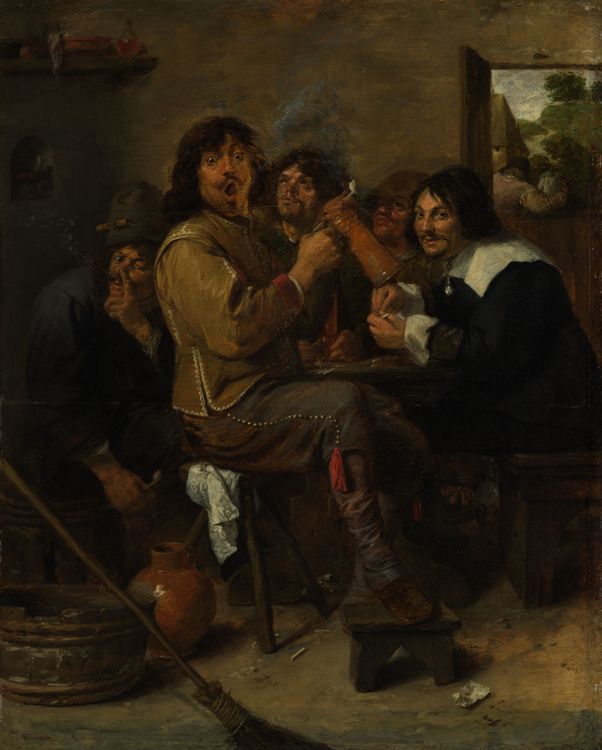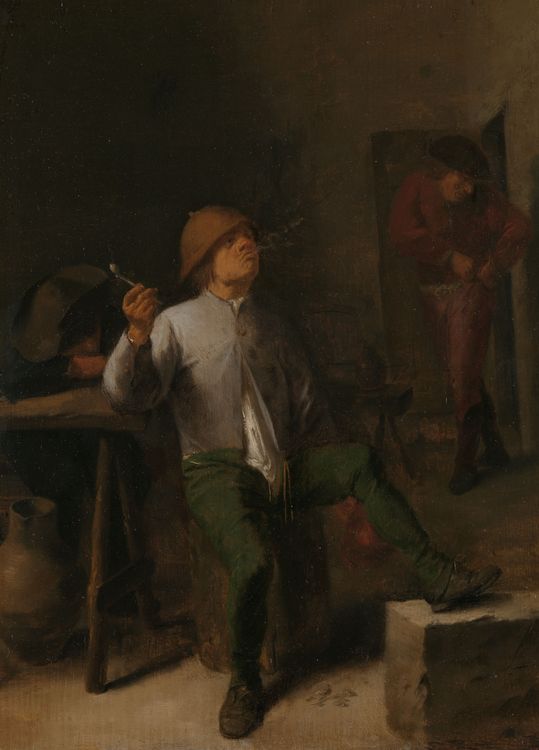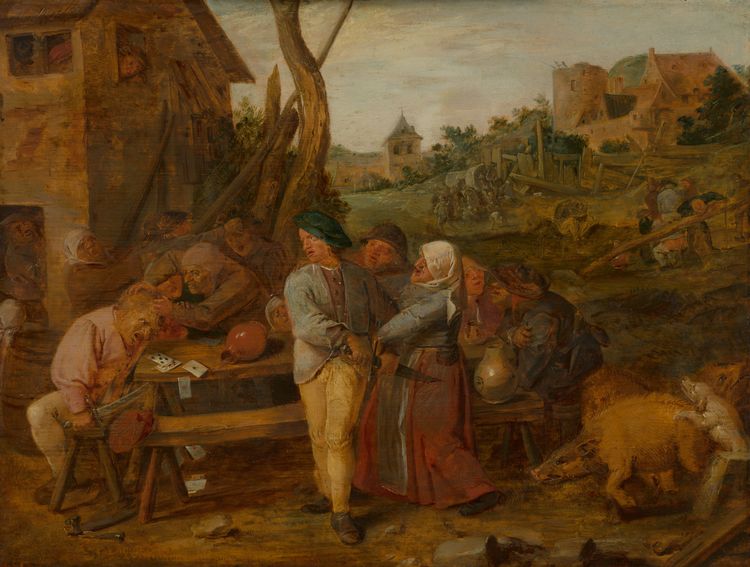
Adriaen Brouwer
Dutch painting in the 17th century had a direct connection with Flemish painting, as the separation of the Netherlands was still relatively recent. One individual who personifies this historical connection is Adriaen Brouwer, who painted in both Haarlem and Antwerp and served as an inspiration to many of his contemporaries.
The Life of Adriaen Brouwer
Adriaen Brouwer was active at a young age, and his work was highly appreciated. Unfortunately, he died young, not living past the age of 32. He was born in the Flemish town of Oudenaarde in 1605. He left his birthplace at a young age.
It is not entirely clear where he went after leaving Oudenaarde. He may have stayed in Antwerp, or he might have participated in the Eighty Years' War, which was still ongoing in the southern Netherlands. He may also have spent time in Gouda. In 1626, he was working in Haarlem and had connections in the art world in Amsterdam. He was skilled at making contacts, and his surname was fitting – Adriaen Brouwer was a notorious pub-goer and likely built a vast network in that way.
Taverns, alcohol, and many friendships represent one side of Adriaen Brouwer. The other side is that of a hard worker who created many dozens of paintings of surprisingly high quality during his short life. He collaborated with Frans Hals in Haarlem and later with Rubens in Antwerp. He was admired by Rembrandt and influenced Jan Steen. He was already a famous painter by the age of 22.
In 1631, Adriaen Brouwer joined the Antwerp Guild of Saint Luke, making him active once again in the Southern Netherlands. He remained famous, and his work was still appreciated, but he lived in poverty. Adriaen Brouwer accumulated debts and even spent time in prison for them. He died in 1638, too poor to afford a grave, and was buried by Rubens. His influence would continue to be felt for decades.
Works by Adriaen Brouwer
Genre painting in the 17th century was strongly associated with Adriaen Brouwer to the extent that such paintings were sometimes called "brouwerkens." Not surprisingly, given his love for pubs, Adriaen Brouwer often painted gatherings in inns. Modern viewers might associate these scenes with Jan Steen, but 17th-century viewers might have compared Jan Steen's tavern scenes to those of Brouwer. Brouwer, in turn, owed a debt to Willem Buytewech, who is considered the pioneer of genre painting.
Adriaen Brouwer was someone who understood and saw the people around him. His work reflects this understanding and looks very realistic. His talent shines through his canvases, seemingly effortlessly capturing people and their behavior with swift brushstrokes. This is why he was admired by contemporaries and later painters.
Adriaen Brouwer & the Fun Part of Art
For Adriaen Brouwer, art was clearly a source of pleasure, and his enthusiasm is evident in his paintings. He painted what he personally cared about, allowing us to see his daily life and providing a glimpse into the society of the 17th century through his eyes. In this way, he personifies the fun part of art, making him a central figure in our virtual museum. Bas Zevenbergen invites you to raise a toast with him and Adriaen Brouwer to celebrate what makes these old paintings so fascinating.


